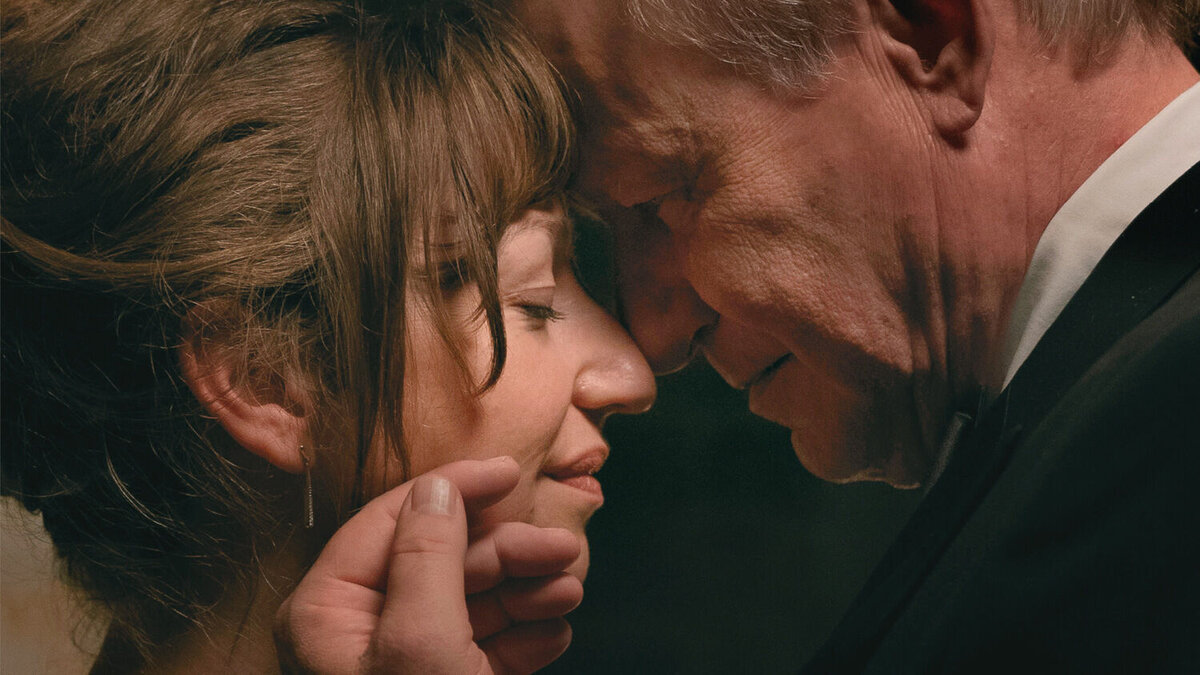«Hope» - Movie Review by Kinoafisha

A virtuoso Scandinavian drama about illness, love, and family life.
Anya (Andrea Bræin Hovig) returns from her first international tour. Her dance performance was a huge success in the Netherlands. Waiting for her at home is her family, consisting of her civil husband Thomas (Stellan Skarsgård), a theater director by profession, and six children. The younger three are their own, while the older three are Thomas's children from his previous marriage. But to Anya, it seems like there is no difference between them. It's December on the calendar, Christmas is approaching, and everything seems fine. The only worries are health problems: strange headaches, inability to read texts. After an MRI, the doctor delivers a bleak diagnosis to Anya. Last year's lung cancer, which according to doctors she had gotten rid of, may have metastasized. New research has identified a tumor in her brain. "It's incurable," the family doctor informs the couple.
The film by Norwegian director Maria Sødahl is divided into chapters, which count down the festive winter dates. But for Anya and Thomas, days that are filled with Christmas and New Year's preparations for ordinary people turn into a medical quest. Urgent tests need to be done, a surgeon needs to be found, they need to somehow tell the children about the illness, and they need to understand how much time they have left. Or maybe it's better not to know?
The film has an open ending, but in real life – here we can reassure sensitive viewers – everything turned out well. Sødahl adapts her own biography on screen and doesn't even attempt to disguise it. Her family is well-known in the film world. The director's husband, Hans Petter Moland, directed the film "Kraftidioten" about a snowplow driver seeking revenge for his son's death, which was once released in Russian theaters (later remade in English with Liam Neeson). The couple also has six children, three of whom are shared.
In European cinema, films about deadly illnesses have long deserved their own subgenre. In such films, the authors usually reflect on how a person can leave life with dignity, how not to lose their minds from the overwhelming horror of death, and how to prepare their loved ones for their departure. Interestingly, these questions are often addressed in the format of a road movie, a final journey. It's a literary heritage from the 19th century: back then, tuberculosis was the mysterious disease that claimed the lives of the young. Those afflicted with consumption, those with some money, would travel to places with more favorable climates and, in the realm of art, became eternal wanderers seeking encounters with the sea.
"Hope" shows how far these fantasies are from reality when the story is told not by a detached romantic author, but by a survivor. Maria Sødahl turns her film about illness into a film about family. There is also a motif of travel, but it is an inward journey. The proximity of death poses a question to the main characters about what their relationship has been all these years and whether there is still a spark of what can be called love between them. When Thomas asks directly in the hospital if they can get married, Anya doesn't immediately understand whether to agree or not. She once wanted it many years ago, but does she still want it now?
In one of the key scenes of the film, a young female doctor compares cancer to peeling an onion. To see the true picture of the disease, many layers need to be peeled off. Anya and Thomas will have to do the same with their marriage. To understand their true feelings, they will have to set aside shared domestic life, children, mutual grievances, and the long habit of coexisting side by side. Sødahl also skillfully conveys the idea that the female experience in such situations differs from the male experience. While Anya was raising their children, Thomas was building his career, and she, equally talented, found herself in his shadow. And now, as the children have grown up and the heroine has time for her own projects, fate throws a wrench: it is too late to make plans. (Here, Anya's biography once again mirrors the director's biography. Sødahl made her debut in 2010 with the excellent drama "Limbo," which won five national "Amanda" awards, but then fell silent for almost 10 years. "Hope" is only her second feature film. Last year, it became Norway's official entry for the Oscars).
The film owes a great deal to the actors for maintaining a very delicate and restrained tone until the very end. Andrea Bræin Hovig plays a fragile woman who carries the weight of a large family on her shoulders without bending for a moment under its burden. Stellan Skarsgård, who happens to be a close friend of Sødahl and Moland and a witness to the real events, once again proves that he can embody any male character. Here, his character is a focused silent type who suddenly realizes that he has taken the domestic idyll for granted all these years.
For those who appreciate Scandinavian cinema for its ability to depict any human abyss with sparse strokes, "Hope" is definitely worth watching. It is a rare film that is complete and honest, leaving exactly the feeling that was promised in its title. By the way, a remake in the form of a series is coming soon. Amazon has bought the rights to the film, and Nicole Kidman is producing the project and will also play the lead role in the new "Hope." It will probably be interesting. But when was the last time an English-language version turned out better than the original?